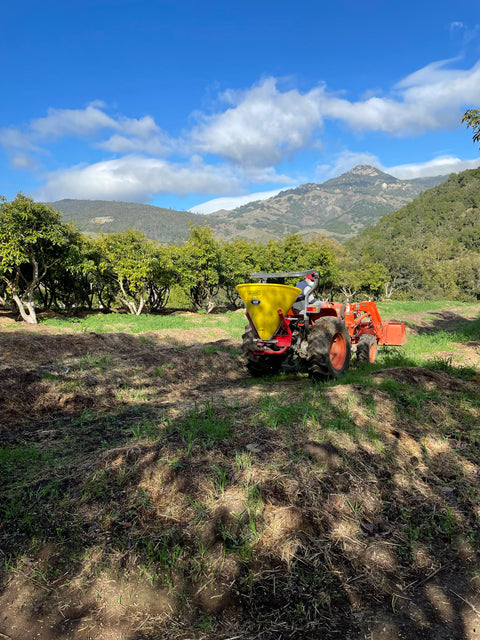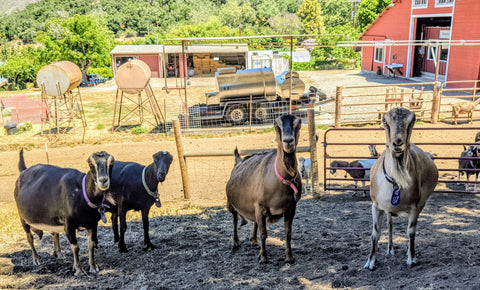As we are finally coming into California’s small window of the rainy season, we like to make sure we have cover crop seeds spread in all of our orchards, especially those with exposed soil.

Each year farmers have to try to predict the right timing to get the best yield of cover crop. Last year, like most things in 2020, was a literal wash. We cast our seeds during the 1 of only 2 rain storms we got, and sadly most of the seeds did not establish well enough.
We then received 17 inches of rain in 36 hours and they were either drowned or washed away. We are hoping these upcoming mid-December storms are timed perfectly.
What is a cover crop? Cover crops are plants that are planted to cover the soil, rather than planted to harvest. (We do however enjoy some of the crop as a bonus treat!). Cover crops do a number of wonderful things that help keep our orchard soils happy and healthy. It might seem counterintuitive to plant plants other than the fruit trees we cultivate, but they actually have complementary effects on our main crops.

Here are a few of the main reasons we use them:
- Helps aid soil erosion with its root system that holds the soil in place during rain.
- Releases sugars through the root stem into ground providing food for other plants.
- Nitrogen fixing legumes add nutrients to the soil.
- Plants with deep roots like Daikon Radish help us to break up compacted soils and increase drainage.
- Helps with biodiversity and wildlife into the agroecosystem.
- Decomposes in the ground and increases the organic matter in the soil, while helping with tillage.
- Helps with weed suppression.
The blend Jack concocted this year consists of organic barley, organic bell beans, organic vetch, organic peas, and organic daikon radish.

Overall this will help with our soil’s fertility and will lead to healthier plants with tastier, higher yielding crops! It's a win-win!



